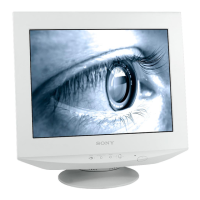
Do you have a question about the Sony TRINITRON CPD-G500 and is the answer not in the manual?
Key technical details of the monitor, including CRT, resolution, and image area.
Steps to perform after repair before releasing the set to the customer.
Procedure to measure AC leakage current from exposed metal parts.
Monitor's compliance with power-saving guidelines and its stages.
Using the self-diagnosis function and interpreting power indicator status.
Detailed horizontal and vertical timing specifications for different modes.
Warnings regarding power connections, static electricity, and installation.
Using IMAGE RESTORATION and OPTION settings like degauss, menu position, and control lock.
Guidance on resolving thin lines, no picture, or out-of-scan-range messages.
Solutions for common problems like no picture, ghosting, or incorrect sizing.
Remedies for color uniformity, button operation, and hum sound.
How to use the self-diagnosis function and interpret results.
Step-by-step instructions for removing the monitor cabinet.
Procedure for safely removing the D board from the monitor.
Steps to remove the G board, including connectors and mounting.
Instructions for removing the A board and I/O terminal board assembly.
Procedure for removing the N board and its associated components.
Steps to remove the bezel assembly and H1 board, securing the picture tube.
Procedures for safely removing the picture tube and associated components.
Steps for removing the J board after the picture tube is detached.
Instructions on safely removing and handling the picture tube's anode cap.
Procedures for HV ADJ, Regulator, and Protector circuit checks.
Checks for Beam Current Protector circuits on D, G, and N boards.
Initial and fine adjustment of landing for purity and screen centering.
Rough convergence, position, size, and focus adjustment procedures.

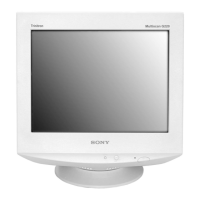




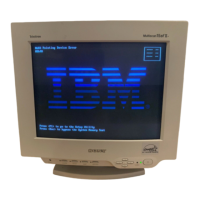
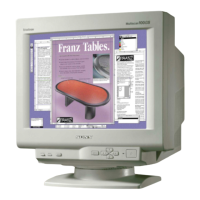

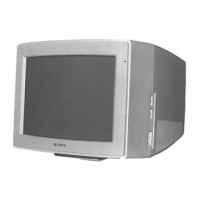
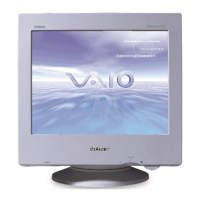
